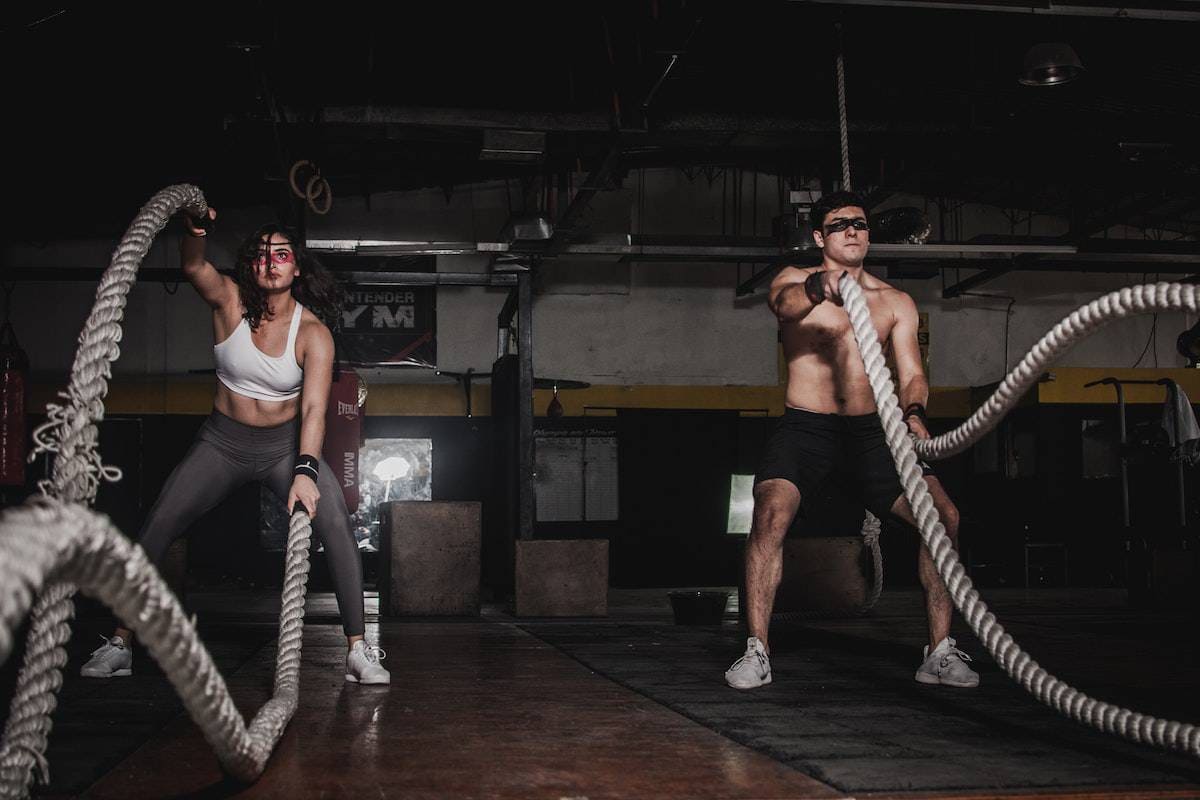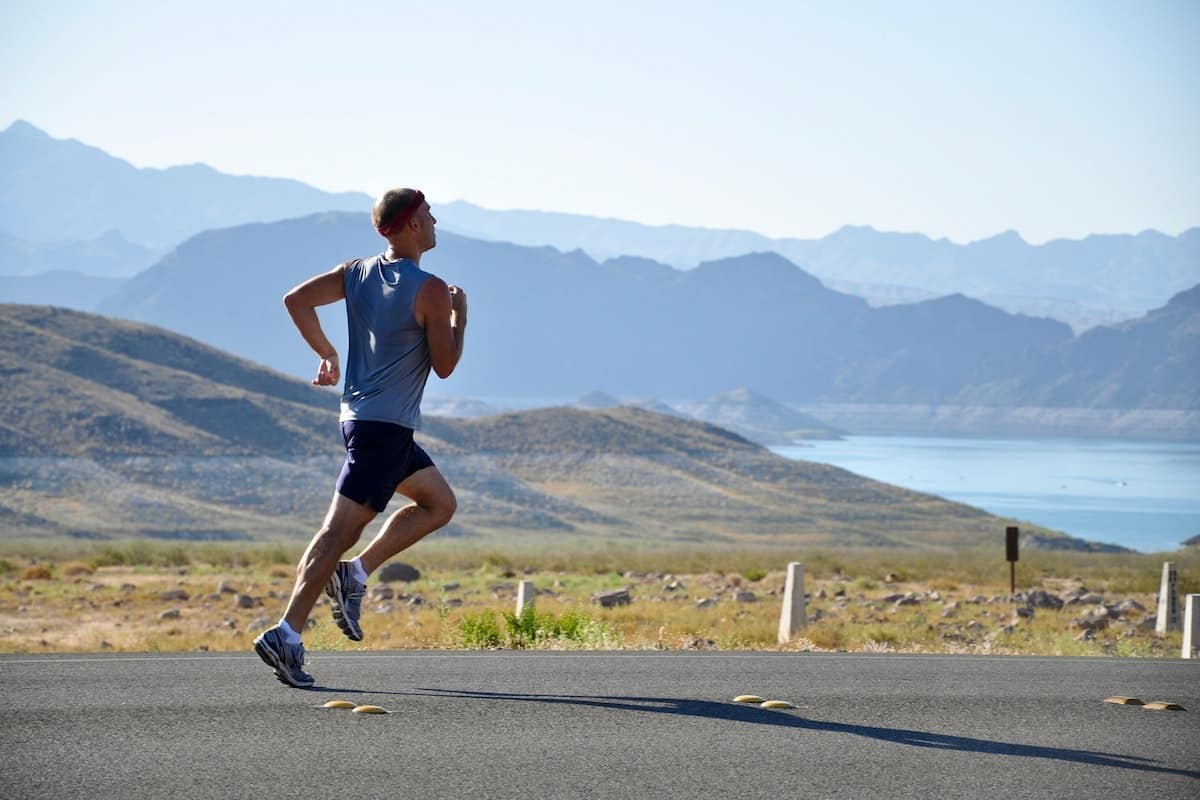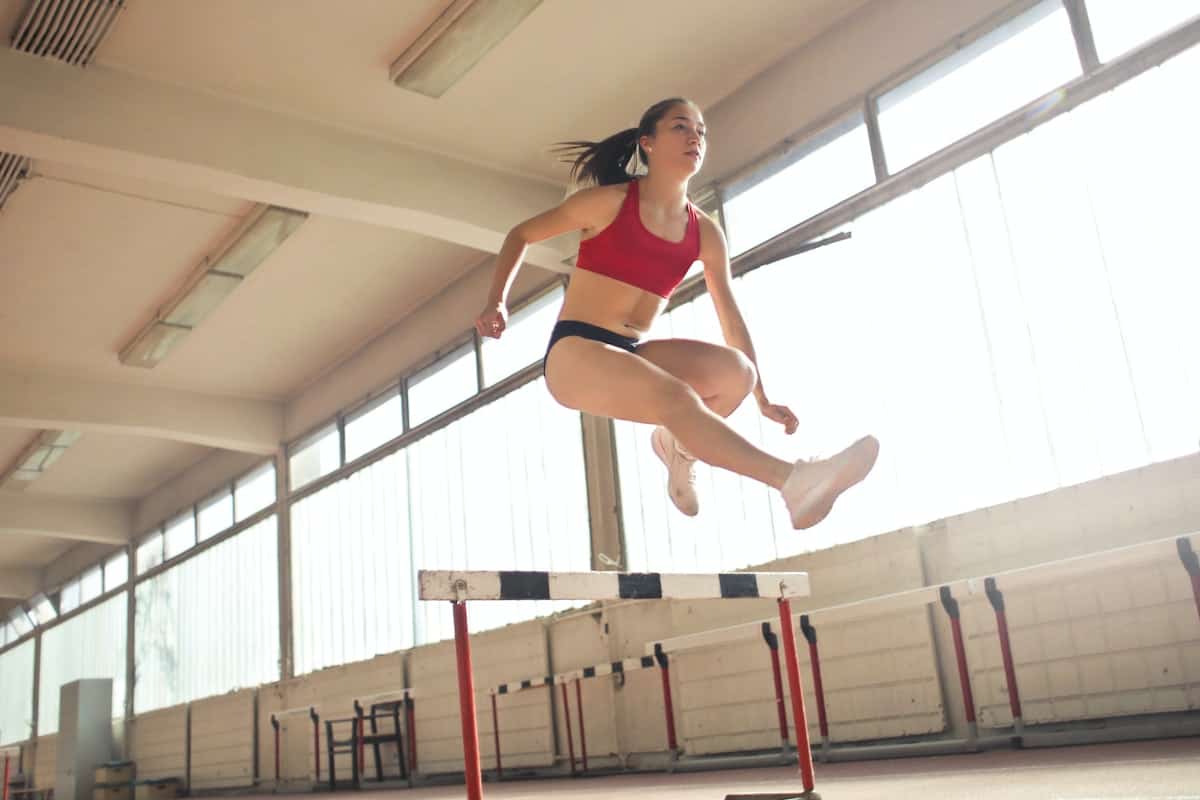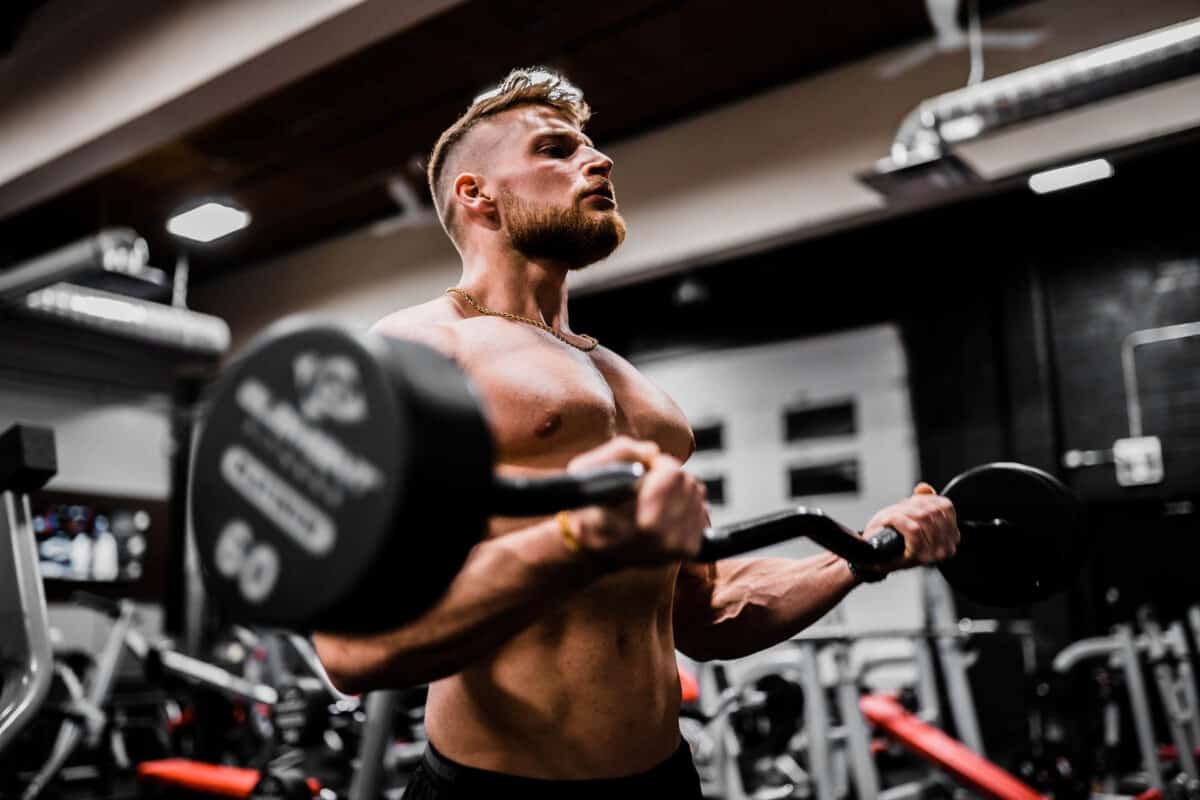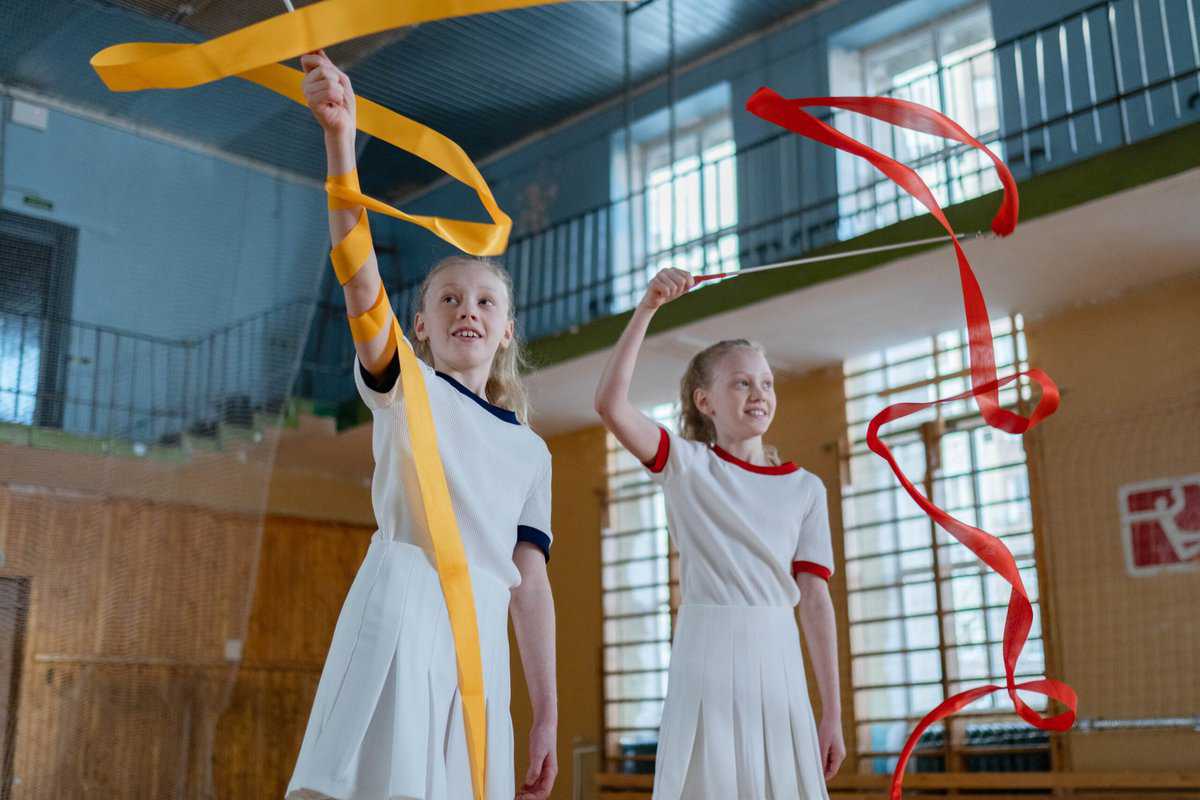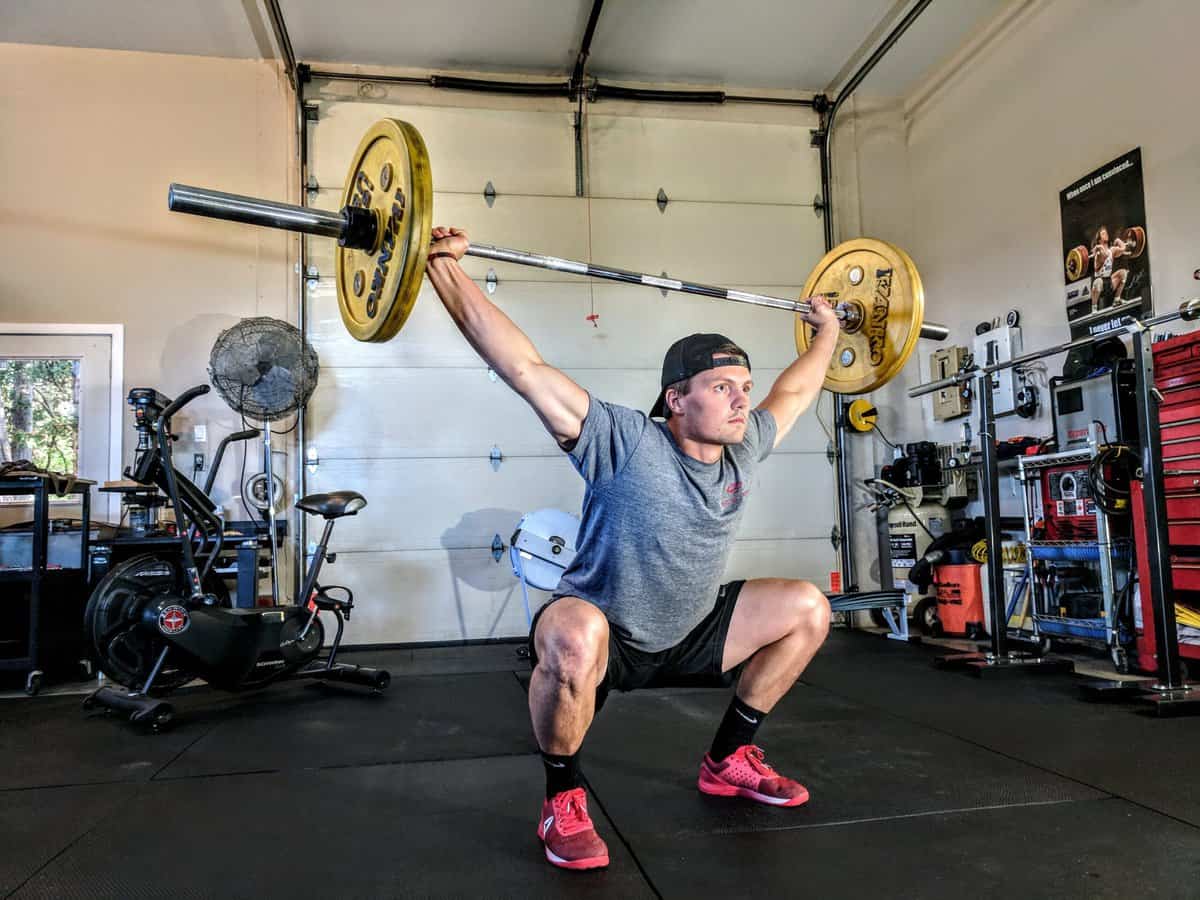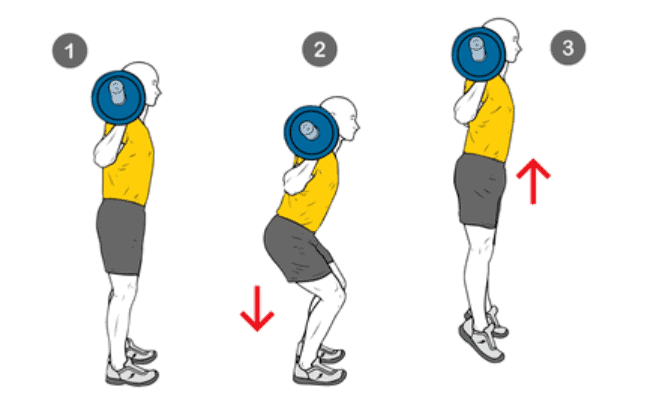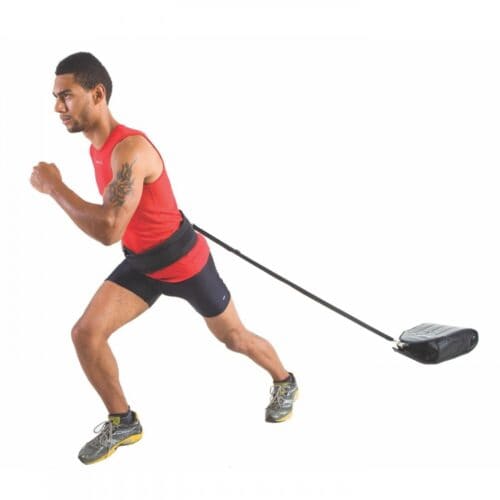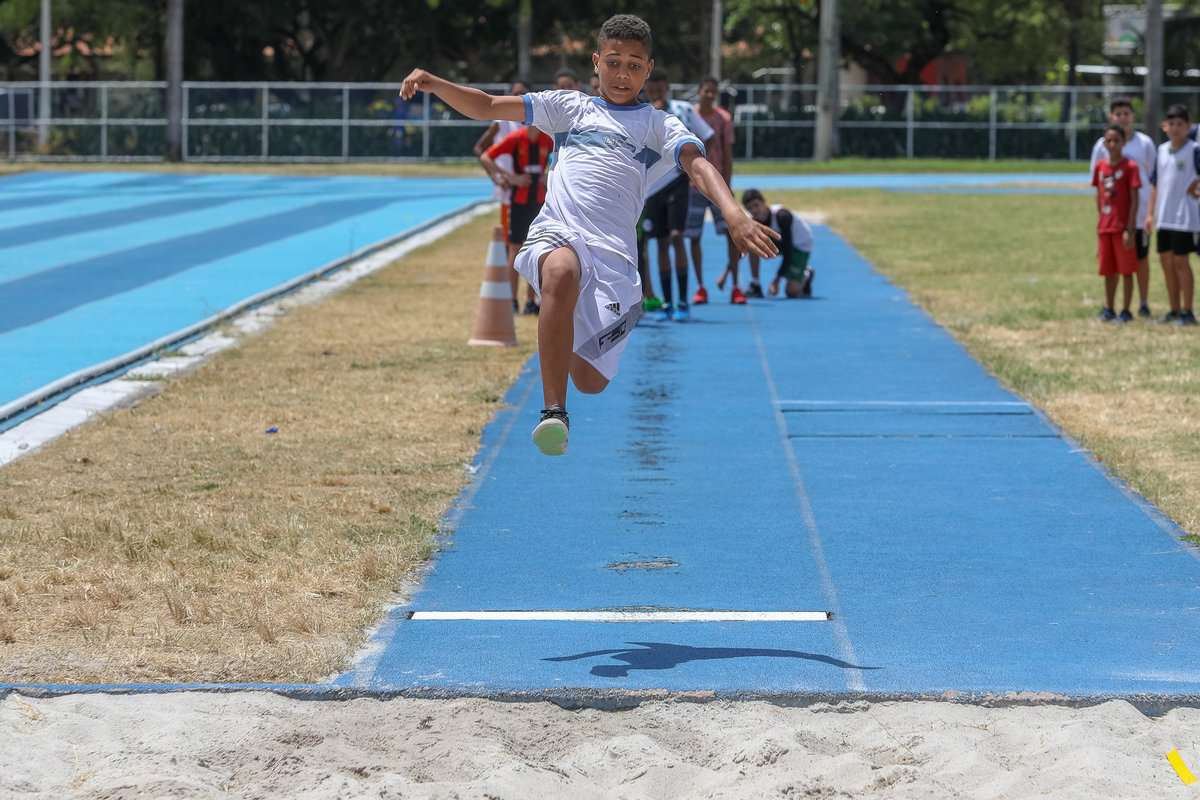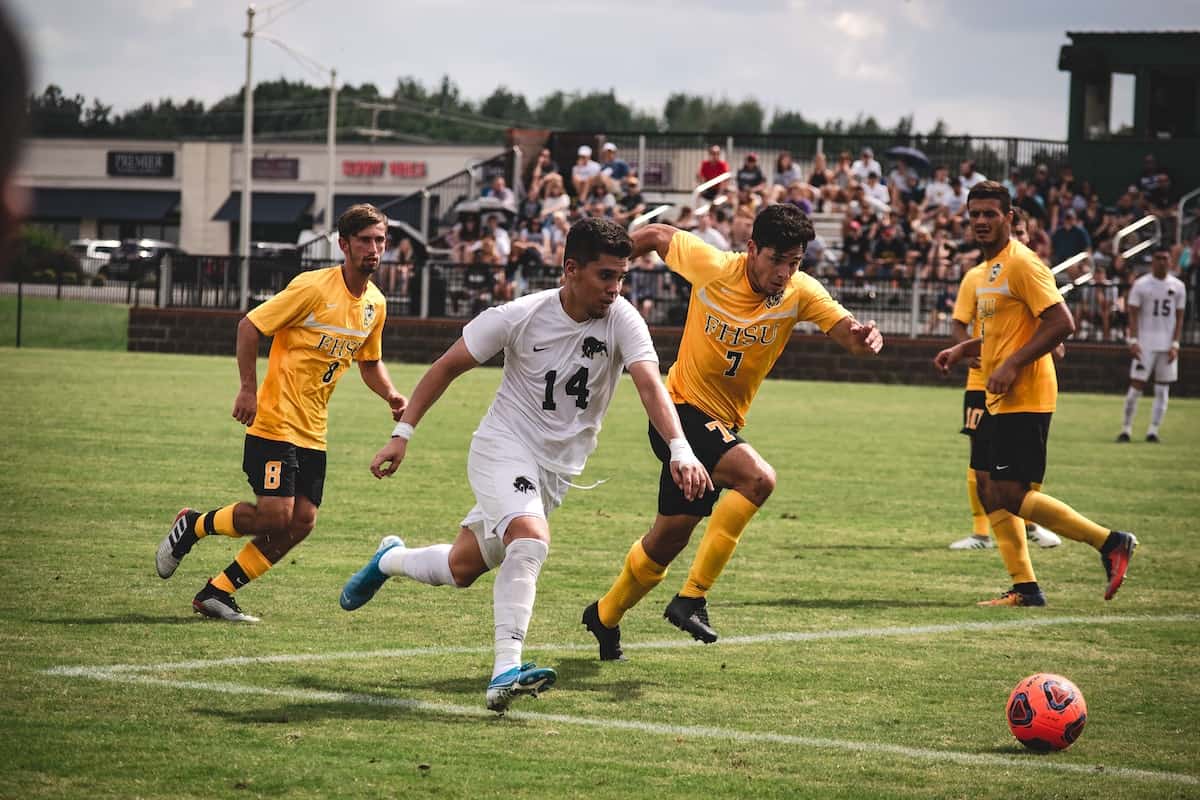In this article, we will classify the different types of forces that exist in Physical Education, as well as some training exercises.
Additionally, we will mention some factors that influence the development of strength and the different types of forces that appear in soccer.
What is strength?
From a physical perspective, the definition of strength is “that action capable of changing the state of motion of a body, so that it undergoes an acceleration” (1).
However, different authors who have developed the field of physical education have established several definitions for the concept of “strength”(1):
- In 1974, Morehouse defined strength as “the ability to exert pressure against a resistance”.
- In 1977, Meinell defined strength as “the conditional motor ability of a fiber or set of fibers to produce tension”.
- In 1987, Knuttgen & Kraemer defined strength as “the maximum tension that the muscle undergoes at a given speed”.
- In 1988, Fucci and Benigni defined strength as “the ability to overcome a load due to muscle contraction”.
In general, for most expert authors in Physical Education who established a definition of strength, they relate it to the basic physical ability that constitutes any type of movement.
And what about the basic physical abilities?
According to the model of “Information Processing” by Marteniuk, the basic abilities are a set of abilities that influence the factors of movement execution and symbolize its quantitative aspect (2).
Additionally, Morales and Guzmán consider that strength is a popular component of our daily life, as every activity performed by humans, no matter how basic or simple, requires strength to carry it out.
Therefore, whether in sports or daily work, there are different types of forces (3).
Types of forces
There are many types of forces depending on the aspect we are dealing with, so we can make the following classification (1):
Types of forces according to physical activity
This group includes the following types of forces according to physical activity (1):
- Maximum concentric strength (greatest positive load against the force of gravity), eccentric (maximum negative force in favor of gravitational force), and isometric (constitutes a contraction with limiting load and without displacement).
- Strength-endurance: the ability of the neuromuscular system to withstand fatigue during long periods of loads or repetitive movements during work involving the muscles.
- Strength-speed: the ability of the neuromuscular system to generate a great impulse in the shortest possible time, with the aim of overcoming a resistance at the maximum contraction speed.
Types of forces according to muscle work
We can distinguish 4 types of muscle work (1):
- Propulsive muscle work: main in sports. It involves muscle shortening, weight impulse, and overcoming resistance.
- Braking muscle work: performed to cushion jumps and execute activation exercises. It is one of the types of forces that requires muscle extension.
- Static muscle work: performed to fix the body in a specific position. The muscle contracts, but without shortening.
- Combined muscle work: a mix of the 3 previous types of work.
Types of forces according to muscle action
This group includes several types of forces (1):
- Isotonic: the muscle movement is capable of overcoming strong resistance.
- Concentric: the muscle shortens through acceleration. Additionally, the muscle insertions approach each other, as in the case of the bicep curl.
- Eccentric: occurs when the muscle lengthens and undergoes a deceleration of movement. In this case, the muscle insertions move apart.
- Plyometric: the muscle insertions move apart initially, then approach in a short time. An example could be going down stairs with feet together, jumping.
- Static: neither shortening nor lengthening of the muscle occurs, as there is no resistance.
- Auxotonic: both isometric and isotonic work occur simultaneously, as in the sport of soccer.
Types of forces according to the nature of muscle contraction
We will summarize this group in the following table, based on information obtained in 1974 by Adams and Werchoshanskij and in 1999 by Tous (1):
|
Nature of muscle contraction |
Occurs |
Examples |
|---|---|---|
| Acyclic strength-speed | Due to a response to inertia resistance. | Sports games |
| Cyclic strength-speed | By repeating a strength-speed work while effectively maintaining the exercise. | Sprint |
| Explosive-ballistic strength | A maximum force in response to a muscle contraction. | Shot put |
| Explosive-reactive-ballistic strength | A maximum force in response to muscle extension. | Jump cushioning |
| Tonic muscle contraction | Strong and long contraction | On rings “crucifix” |
| Phasic muscle contraction | Cyclic gestures | Canoeing |
| Phasic-tonic muscle contraction | When tonic and phasic contractions alternate | Mix of gymnastic elements |
| Explosive-tonic muscle contraction | When large resistances are overcome, developing rapid strength. | Weightlifting: the snatch |
Factors influencing the types of forces
There are several factors, both intrinsic and extrinsic, that can influence when working on strength. Among them are (2):
- Muscle temperature: to perform a strength exercise, a prior warm-up is necessary.
- Muscle cross-sectional area: It is the determinant of muscle strength. In fact, a muscle with a larger cross-sectional area exerts more strength than a muscle with a smaller cross-sectional area.
- Muscle length: when at rest, the muscle is capable of exerting great isometric strength, as myosin and actin are very close to each other.
- Type of muscle fibers and arrangement: the greater the amount of white (fast) fibers, the greater the strength. Conversely, if there are more red (slow) fibers, the strength will be less.
- Neuromuscular coordination: the greater this is, the greater the strength exerted.
- Types of levers: the power generated by the levers will vary in relation to the characteristics of each individual, the joint area we work on, and the technique used.
- Psychological factors: motivation, attention, persistence, effort.
- Sex: due to hormonal differences between men and women.
- Age: from 11-12 years old, body segments and muscle mass increase, therefore, the ability to exert greater strength will increase.
- Time of day: the ideal times to generate greater strength are from 10 to 12 in the morning and from 7 to 10 at night.
Training exercises for the types of forces
What are the best exercises to train the different types of forces that exist?
Below are a series of basic and effective exercises to train strength capacity (2):
Full squat
In general, this exercise consists of bending the knees down and then up from a vertical body position. The best way to perform the full squat to train strength is with a barbell (2).
[article ids=”77817″] To do this, we first have to pick the appropriate amount of plates for our characteristics. We grip the bar firmly with our hands and separate from an initial standing position, separate the feet, with the toes slightly outward, to shoulder width. Then, we contract the pelvic floor and core while keeping the chest elevated.
To execute the exercise, we bend the knees and keep the back part backward, lower the legs until the butt is lower than the knees.
Continuously, we make a quick movement to return to the initial position, applying pressure from the heels while exhaling.
Bench press
This exercise primarily works the upper body. The person training should lie on the bench press, keeping the back supported on the bench, lifting and lowering a barbell above the chest (2).
Snatch
[article ids=”27798″] To train the different types of forces, we can perform the snatch, which involves intense force with the legs and trunk, as well as having great flexibility in shoulders, hips, and ankles (2).
To start the exercise, it is essential that the bar is placed horizontally in front of the legs of the person performing it, so they can grip the bar with their hands and lift the bar in one movement from the platform to fully extend both arms vertically above the head.
It is important that when lifting the bar, only the feet can touch the platform when executing the movement.
Vertical jumps with and without load
The vertical jump with load is based on performing a jump upwards, from the contact area, with an additional load.
In fact, several studies have shown the effect of this explosive exercise in relation to increased performance, specifically in sprint and jumping abilities (5).
Another version of the vertical jump is without load, which is performed in the same way as the previous one but without additional loads (2).
Drags
Dragging is one of the best exercises to train different types of forces.
The person performing this exercise must drag on the ground a load attached to the body correctly.
In other words, it is an exercise in which the athlete covers a distance with a body resistance that is dragged with a rope attached to the waist. This case is known as the “sled” exercise (6).
Triple seconds
It is one of the exercises to train the different types of forces that consists of performing three consecutive jumps where the first two are done with the same leg and the last with the opposite leg (2)
Recommendations for training the different types of forces
When conducting training for the different types of forces, we must consider a series of important aspects (4):
- We must perform an analysis of the content of the sports test we are dealing with, as well as the strength needed to achieve the best results.
- Select the main types of forces we need to train and the factors that influence them.
- Use tests or assessment tests in each of the strength training programs, with basic scientific criteria: objectivity, reliability, and validity.
- Analyze the objectives to establish the assessment tests: Search for performance in the exerted strength, criteria to detect talents based on data analysis at the population level, find out the possible tests in which the athlete achieves better performance indices, or modify the training process based on the results obtained.
- Distinguish between laboratory tests and field tests: in laboratory tests, the sports activity in question is evaluated in a controlled manner using an instrument, while in field tests, the athlete is evaluated in the test environment, making it difficult to manage weather factors. Additionally, the instruments used are not as precise as in laboratory tests.
Relationship between body weight-strength and strength-sport
To assess the production of the different types of forces generated, it is essential to consider body weight, as the greater the number of muscle myofibrils, the greater the strength generated.
In this area, two new types of forces arise: absolute strength and relative strength.
Absolute strength is the amount of force a person can produce regardless of their body weight, while relative strength is the force a person can generate in relation to their body weight. Therefore, if relative strength levels are high, the development of explosive strength will be greater (4).
[article ids=”78615″] In the sports field, two other classifications of types of forces arise, namely, general strength and specific strength.
Specifically, general strength includes exercises aimed at developing the person’s strength in a global manner and requires basic preparation, applicable in any sports area.
In contrast, specific strength includes exercises aimed at increasing strength in the specific field of the sports discipline, where the most involved muscle groups in those disciplines are primarily worked on (4).
Types of forces in soccer
Soccer is considered a physical contact sport, where we must have the physical abilities to withstand the repetitive accelerations that are usually performed and other high-intensity efforts.
Therefore, athletes perform demanding movements with great explosiveness, as maintaining possession of the ball requires a skill that must be trained.
Additionally, it is necessary to train kicks, throws, jumps, warm-ups to run for the longest possible time, etc. (8)
For this reason, in the actions that occur during a soccer match, 4 types of forces can be distinguished (7):
- Kicking force
- Jumping force
- Contact force
- Running force
Kicking force
It occurs when a pass or a shot is made, generally using the feet in the case of soccer, although a header and hands can also be used in the case of the goalkeeper.
For this, a good level of explosive strength is required, good levels of strength in both the lower and upper limbs.
The muscles involved in soccer kicking are the knee extensors (quadriceps) and the iliopsoas (one of the hip flexors).
However, there are also other muscles that act in synergy, as secondary agonists and stabilizers, with the aim of improving performance and reducing the risk of injury. (7)
How is kicking force trained?
Kicking force is trained with explosive strength exercises, isometric and eccentric exercises of the muscles that act during the exercise, performing actions similar to kicks against the resistance produced by rubber bands.
Additionally, activities can be performed to simulate unstable kicks, such as balance boards, pushes from another person to unbalance the athlete, etc. (7)
Jumping force
In soccer, it is one of the types of forces that occur when the player jumps to touch the ball with the head, in cases of clearance, shot, or pass, or with the hands in the case of the goalkeeper.
This jump requires the necessary power to reach the height that allows contact with the ball before another player (7).
The muscles involved in jumping force are those that perform the “triple extension” (hip, knee, and ankle extension), the gluteus maximus, quadriceps, and triceps surae (7).
How is jumping force trained?
Jumping force is trained through the coordination of the different muscles involved, increasing maximum strength and power to extend the hip, knee, and ankle, with plyometric exercises, with falls in unstable situations, and with specific situations, whether with or without opposition, where headers or clearances with a prior jump occur (7).
Contact force
It occurs when collision movements, charges, tackles, discussions between players to gain ball position, etc., are performed.
This type of force is very common in a soccer match, as continuous defensive attacks are made, and in offensive attacks when the player with the ball protects it by struggling with the player from the other team (7).
How is contact force trained?
Contact force is trained through hypertrophy when necessary, with maximum strength exercises for the lower limbs, with specific abdominal and lumbar exercises for the trunk, and with proprioceptive exercises in unstable situations (7).
Running force
It is the force that originates in soccer during movements, accelerations/decelerations, changes of direction and sense. In fact, according to statistical data, a soccer player covers an average of 90 minutes; being 4-5 km in the case of goalkeepers (7).
Running force is one of the types of forces where the muscles involved are from the lower body, that is, gluteus maximus, quadriceps, hamstrings, triceps surae, and tibialis (7).
How is running force trained?
[article ids=”57876″] Running is one of the types of force that is trained by doing extensive work with the muscles adjacent to the knee, with the aim of increasing stability and explosive strength of the lower body and trunk; developing the eccentric strength of hamstrings and quadriceps.
Additionally, specific game exercises can be simulated that emphasize the movements that can occur in a match (7).
Conclusion
The development of the different types of forces is of great importance for a person’s survival. As we have seen in this article, there are factors that can intervene in the development of strength, so it is necessary to adopt a good training program.
Depending on the sport or exercise, one type of force or another will intervene, as we have seen in the case of soccer, where 4 types of forces are significantly involved.
Therefore, it is necessary to perform the exercises correctly, and thus achieve not only an increase in the person’s physical level but also cognitive.
Bibliographic references
- Bernal-Ruíz, A. (2006). Strength and the muscular system in Physical Education and Sport. Wanceullen: 43-56.
- Estay-Sepúlveda, J.G. (2028). Training of basic physical abilities: strength. Observatory of Sport Journal. Journal of Humanities and Social Sciences, 4 (5): 7-15.
- Morales del Moral, A. & Guzmán -Ordóñez, M. (2003). Dictionary of physical education and sports. Colombia: Gil Publishers.
- Rodríguez-García, P.L. (n.d.). Types of Forces, their classification, and assessment tests. University of Murcia. Faculty of Education.
- Pérez- Castilla, A. (2020). A methodology for evaluating overloaded vertical jumps on a force platform. Doctoral Program in Biomedicine. Research Line in Physical Activity and Sport. University of Granada.
- Alcaraz-Ramón, P.E. (2010). Sprint training with resisted methods. Culture, Science and Sport, 5 (15): 19-26.
- Tagliaferri, H. (n.d.). General and specific strength in soccer.
- González, Fernández, F.T. et al. (2020). Proposal for a proprioceptive training program in soccer to prevent sports injuries. Trances, Journal of Transmission of Educational and Health Knowledge, 12(1): 19-30.
